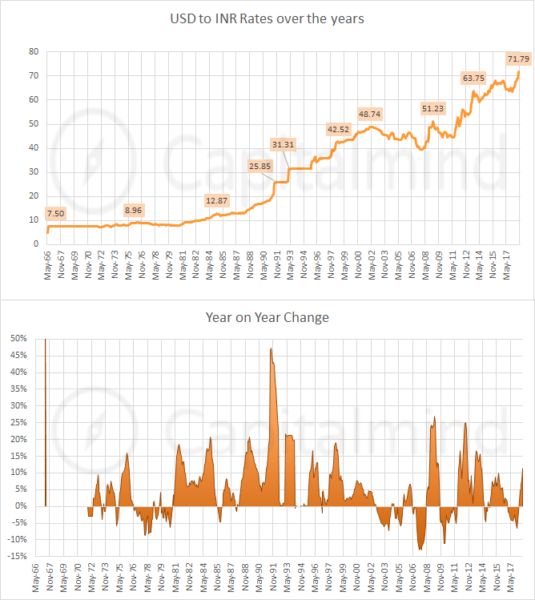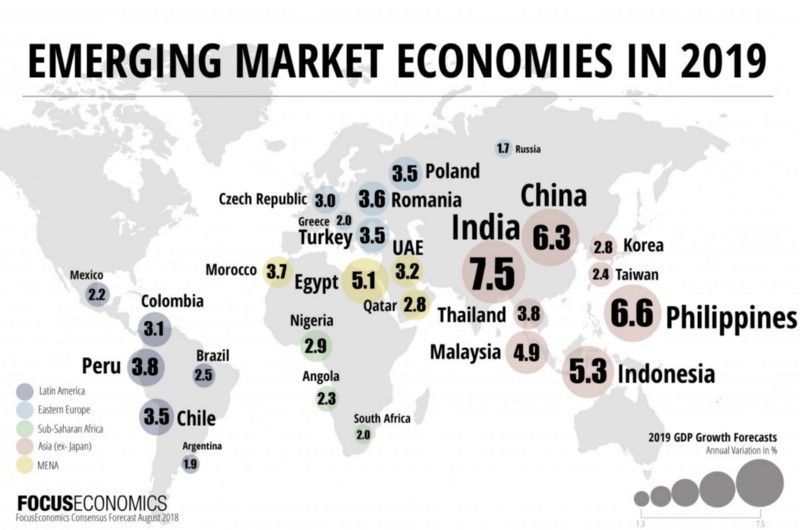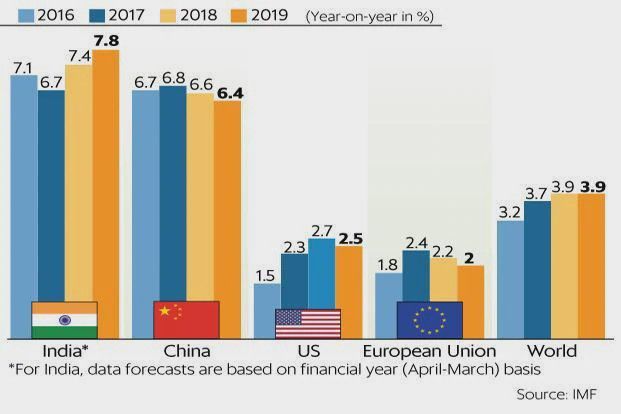A Brief History Of Indian Economy
May 20, 2019 • 2 views
India gained its independence in 1947. However, the senior political leaders at the time decided to opt for an planned economy in order to increase India’s growth. After independence, the govt. took many measures to achieve substantial growth. Many times it was successful, many times it was not.
In that time, there was a strong urge for the countries to choose Industry as the “Prime Moving Force”. India was also no exception. Although India lacked significantly in the food reliance, it opted for the Industrial economy so that it could have enough support from the World Bank and International Monetary Fund as these two organisations used to help countries which opted for the industrial economy.
Post-independence, Indian govt. started the five year plans to achieve growth as planned. In the 1st five year plan, the govt. was able to increase the food production to make the country self-reliant. But it was not enough. However, it was the time when poverty was widespread. To alleviate poverty, GoI established the PSUs(Public Sector Undertakings). Pandit Nehru mentioned these PSUs to be the “Temples of Modern India”. PSUs proved themselves to be the skill and employment generators. But still the establishment of industries needed govt. permissions, also known as “License Raj”. It was mandatory to have a 51% share for the govt. in many companies. In this way, the executive control lied with the govt.
In 1960s, when Sino-Indian war and Indo-Pakistan war drained the resources, the GoI opted for the Annual plans to curb out the problems altogether. However, these couldn’t give their measured results. And in 1971, another war began regarding the liberation of Bangladesh with Pakistan and India suffered with severe refugee problem. After that the Govt. started the “Panchayatiraj” according to Gandhi ideology. And the decentralization of the Indian Economy began. However, 1980s could not bring India substantial growth due the political turmoil in the country.
But the real development started in the decade of 1990 when the Gulf War crisis hit the gulf countries. Many Indians worked in the gulf countries. In a war in those countries, the Indian workers lost their jobs. And the private remittances which kept up the foreign exchange reserves, decreased rapidly. In that time, International Crude prices rocketed up and India had to use the Foreign reserves to but oil. Due to low reserves, India had to take loans from the International Monetary Fund, the last resort of India. And India was on a severe debt also known as the “Balance of Payment Crisis”. However, the loans came up not only with interest rates, it came with certain conditions which were abiding on India. According to IMF conditions, India had to open up the market for private foreign corporations with reduction in budgetary and fiscal deficit, 10% cut in government expenditure and subsidy, import liberalization, industrial policy reforms, trade policy reforms, banking reforms etc. More importantly, the Devaluation of Rupee by 22% in two consecutive fortnights. As a result, the Rupee fell from ’21 to ’27 against every US Dollar.

At the beginning of 2000, the economy slowly picked up growth with a very healthy growth in the Stock Market. At the eleventh plan, the GoI decided the Agriculture to be the Prime Moving Force of the Economy. As well as the insurance companies and the mutual funds became a very curious entertainment for people. Water resources management and urbanization became government’s concern.
After the scraping up of earlier Planning Commission, the new govt. think-tank NITI Aayog suggested for the sustainable development.
India is still a developing country. But still India is the fastest growing economy in the world with the 5th largest economy on GDP basis.


but India's widespread poverty and corruption is hampering growth of the nation as a whole. This must be checked as India is going to become a huge market for domestic and international businesses and India's demographics is also favourable for India's growth. But we have a lot more to become successful as a nation.
Thank You
